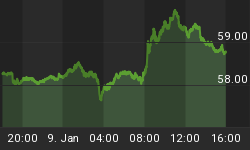In a prior article, I made note of the fact that the larger uptrend was firmly established into the Spring of 2011 (or beyond), with the four-year cycle looking to peak at some point between April and July of next year. In-between, for the shorter-term I mentioned that there was a 90-day (18-20 week) cycle that was due to peak sometime around mid-November (plus or minus). In terms of price, a test or push above the April high of 1219.80 SPX CASH was favored to materialize on or before this cycle turned south, which is obviously what we have seen with the recent action.
What to expect now
With the above said and noted, the 90-day cycle (chart, below) is in the range for a peak, though whether that peak is yet in place remains to be seen. However, the technical indications that I track suggest that - even if a higher high is still out there - we should be relatively close to a top for this particular wave. Having said that, I should also point out that longer-term indicators - like the advance/decline line - are not showing any divergence against price. With that, the suggestions are any correction with this 90-day wave should be followed by higher highs again on the following swing up with this cyclical component.

Calling for the largest-percentage drop since the late-August bottom is not an outlandish forecast, as the greater-majority of the drops (since August 27) have been limited to just over 2% off the top.
Going a bit further with the above, we can take a more detailed look at the 90-day wave, by simply going inside the cycle itself. I keep a detailed record of every up-and-down phase of each of the cycles that I track, going back many, many years. With that, we can take a look at the expectations for the downward phase of this component, and then take a look at the statistical information to see what additional information is available; this could give us some idea of what to look for in the next few weeks.
90-Day Cycle Statistical Observations
As to how the next 90-day downward phase should play out, I am looking for it to form the pattern of a 'higher-low' on it's next correction. In other words, I am looking for the cycle to hold at or (more likely) well above it's prior bottom, which, as noted above, was the August 27 low of 1039.70 SPX CASH.
Adding to the above, since the current upward phase took out the prior high for the wave - which was the 8/9/10 high of 1129.24 - it has registered the pattern of a 'higher-high'. All said then, I am looking for the pattern of a 'higher-high'/'higher-low' on the whatever correction that is seen with this component. With that, we want to go into the past history of this wave, to see what statistical inferences can be drawn.
Why should we be looking for the pattern of a 'higher-low' with the next 90-day down phase? This is due to the fact that the larger 180 and 360-day cycles are still pointing up at the present time - with the larger 360-day component looking higher into the Spring of 2011. This is also due to a pattern analysis of the 90-day wave itself. In other words, when it forms the pattern of a 'higher-high' - and is also bullishly-translated - then the probabilities are better than 75% that it will form a 'higher-low' on it's next downward phase that follows.
In taking a look into the 90-day downward phases in the past that have registered the pattern of a 'higher-high/higher-low', the average decline was about 6.9% off the peak, and lasted approximately 20 trading days before bottoming. However, with the larger trend set firmly higher into the Spring of next year, what I am more interested here are what the greater-majority have done (i.e., on 80% of occurrences).
Looking at what the greater-majority of the 90-day downward phases have done in the past, we can see that about 80% of these have seen their declines lasting 7 trading days off the top. In terms of price, the same 80% have witnessed corrections of 4.4% or better. Ideally, this correction should come in the form of a three-wave affair to the downside.
Stepping back, if the above correction does materialize going forward, then, as noted earlier, the assumption is that the SPX will go on to form a higher high again on the next 90-day rally phase that follows. In other words, after a correction of a week or three off the top (whatever the cycle gives), then we should see a continued break to higher highs again into January, 2011, with the still-outstanding upside target from the 180-day cycle to the 1243.16 - 1286.36 region. Stay tuned.















